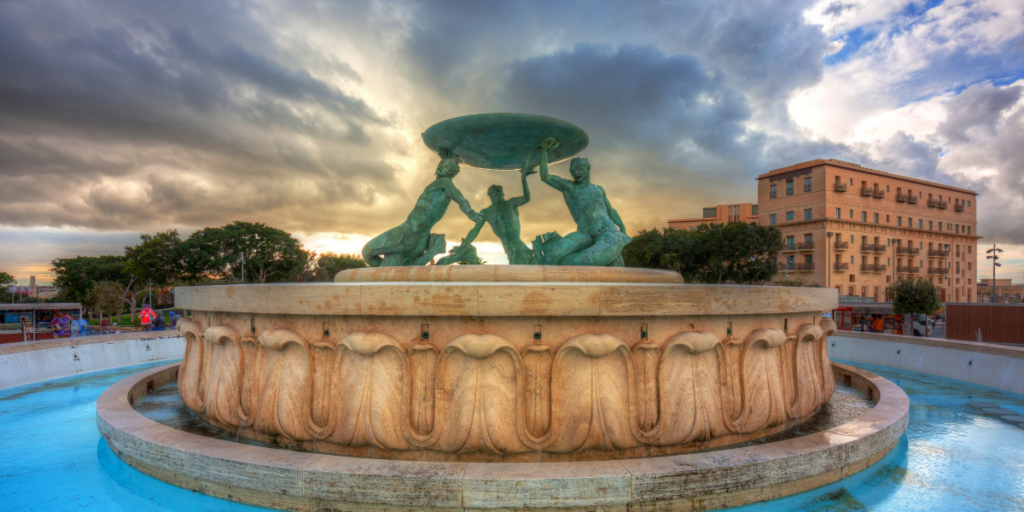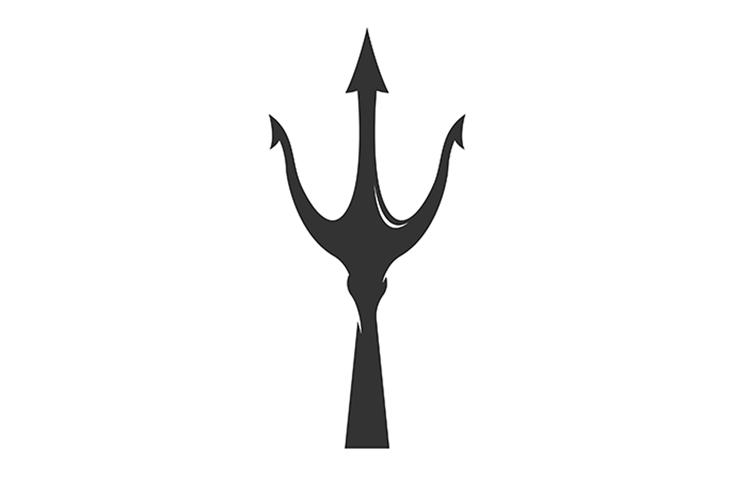Do you ever wonder about the mystery surrounding the king of the sea?
‘The Little Mermaid’ features a character named King Triton. He is the monarch of the merfolk and the father of Ariel. He has several daughters, an archenemy, and a unique trident.
You have come to the right place if you wish to learn more about this intriguing figure. In Greek Ladon in Astronomymythology, Triton was considered a merman demigod of the sea.

Everything you ever wanted to know about King Triton is here, from his origins to how he came to possess such incredible power.
Who is Triton?
Triton was revered in antiquity for his role as a messenger of the sea. Poseidon, the Greek deity of earthquakes, hurricanes, and storms, is essential to understanding Triton in his mythological setting.
Triton, son of Poseidon, is a tyrant of the ocean kingdom Atlantica. Let’s look at this deity from a broad perspective, one that considers his significance in Greek mythology.
In Greek mythology, Triton was born to the sea goddess Amphitrite, or c, as she is called in the Roman pantheon. The gods and goddesses of Greek mythology are the product of oral tradition combined with information recorded in ancient texts.
Amphitrite, the mother of Triton, protected ancient Greece from natural disasters, including famine and earthquakes. Poseidon dispatched all the sea animals to chase her hand in marriage, and a magnificent dolphin discovered her and convinced her to marry him. They raised a large family, but Triton is the one that became renowned.
Triton would blow his shell to keep the waters safe for the passing ships. He was a very potent deity, that’s true. However, Triton’s darker side, in which he attacked ships and raped women, is rarely discussed in scholarly works.
Story of Triton
Triton was half-human and half-fish in the legend. The upper half of his body was human, but the lower half was fish. His unique ability was demonstrated by the twisted seashell he used to either rouse or calm the ocean’s waters. In Greek mythology, Triton often takes on the role of “messenger.”
Triton is portrayed in art in a traditional merman fashion. He had shells and barnacles poking out of his shoulders, giving him a “seafarer’s tan.” He became famous in stories because of the trident he carried.
Triton’s signature was the combination of the trident and one of the three long spears. Triton’s fame is said to have surpassed that of his father due to his superior strength and abilities.
While playing his trumpet, he would direct the waves with his gnarly conch shell. Its sound was rumored to be so ferocious that it could scare away wild elephants, who could have mistook the sound for an oncoming attack.
Pallas was one of Triton’s biological children. Athena was his foster daughter. Among her many roles in Greek mythology, Athena also serves as the goddess of knowledge and warfare. Athena is said to have murdered her foster sister Pallas in a pleasant sparring contest, according to the legends and mythology.
The Greeks came to see Triton as the driving force behind every other deity, eventually coming to refer to all gods as “Tritons,” after the name they gave to Triton.
The Tritons looked like mermaids, and they could be either male or female, depending on the gender of their upper bodies. But, mainly, they accompanied the gods of the sea on their many adventures.
The Sea Daemons: Tritons And Tritonesses

In reference to the group of mermen that occasionally appear with or without Triton, the Greeks began using the plural form of the god’s name somewhere between the sixth and third centuries B.C. As both are semi-humanoid and wild, lust-driven creatures, tritons are sometimes compared to satyrs.
Despite popular belief, female tritons are not referred to as sirens. Birdlike animals with female humanoid heads first appeared in ancient literature as sirens. The term “tritoness” is the proper one to use instead.
Some writers have portrayed tritons and tritones as ocean demons. Most ancient texts agree that daemons are spirits that personify traits or characteristics common to humans. It has been said that these animals are the sea daemons of passion because of their voracious sexual appetites.
Triton in Art And Literature
By the sixth century B.C., Triton had become a common subject for Greek potters and mosaicists. In both artistic mediums, Triton was shown as either the magnificent messenger of Poseidon or a dangerous sea creature. However, it wasn’t until two centuries later that Greek painters started depicting teams of tritons.
Although depictions of Triton with a double dolphin tail date back at least to the 2nd century B.C., it was not until the Romans, who adopted the Greeks’ penchant for sculpting and voluminous forms, that the double dolphin tail became a popular way to depict the god.
Sculptures of Triton resurfaced during the Renaissance, reviving interest in Greco-Roman mythology. Still, this time they were used to decorate or even serve as the centerpiece of the city’s most infamous fountain.
Gian Lorenzo Bernini, a celebrated Baroque Italian artist, is responsible for two of the most well-known examples of this type of work: the sculpture Neptune and Triton and the Triton Fountain. Triton is seen in each of these pieces of art as he blows his seashell.
Sources of Information
Numerous literary works include references to Triton or triton groupings. Hesiod, the Greek poet, calls Triton an “awful” god in his work Theogony, likely alluding to the sour disposition ascribed to this deity.
Ovid gives us another brief but evocative description of Triton in his Metamorphosis during the retelling of the Great Deluge. Poseidon puts down his trident in this passage to still the seas, while Triton, whose “shoulders were barnacled with seashells,” blows his conch to tell the floods to go away.
Similarly, Apollonius of Rhodes’s Argonautica features Triton coming to the aid of the titular heroes, the Argonauts. But unfortunately, the Argonauts had been lost in the Libyan desert for quite some time at this point in the epic poem, despite having their ship with them the whole time.
Once the adventurers reached Lake Tritonis, they discovered the deity there. From there, Triton, posing as a human named Eurypylus, showed the Argonauts the way back to the water.
Additionally, Triton bestowed upon the heroes an enchanted cloud of earth. When the Argonauts realized the figure before them was a god, they considered the gift as a symbol that their divine punishment had ended.
Importance of Triton in Greek Mythology
Being the offspring of the sea’s king and queen, Poseidon and Amphitrite, he served two important functions for the Greeks: first, he could order the waves to be as calm or as harsh as he pleased, and second, he could trumpet his father’s arrival with a conch shell.
When he killed Misenus, a mortal from Troy who dared to compete with Triton in playing the conch, according to Greek mythology, he gained even greater respect from the ancients. Triton, the son of Poseidon, was revered as the divine messenger of the ocean.
The Bottom Line
Triton, the son of Poseidon and Amphitrite, has a reputation as both a magnificent and dreadful deity due to his formidable stature and temperament.
Triton is a contradictory and mysterious entity that may be seen as either a friend or foe to the heroes of the story.
Sometime in antiquity, the name of the god was first used in the plural to refer to all mermen. As a representation of the irrational side of the human psyche, Triton is also widely used as a metaphor for the unconscious.
